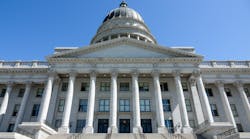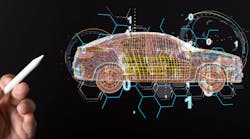For the last year, there has been one topic that has captured the political conversation above many others: infrastructure. During his campaign, President Joe Biden campaigned on his “Build Back Better Plan,” a wide-scope infrastructure package that would make investments in traditional sectors, such as roads and bridges, as well as nontraditional sectors, such as paid leave, broadband, and many others. President Biden has called this plan a “once-in-a-generation investment in America’s future.”
Today, after months of negotiation and deliberation, two distinct pieces of legislation have emerged: an infrastructure bill (H.R. 3684, The INVEST in America Act), and a budget reconciliation framework. However, although these are two separate pieces of legislation, Speaker of the House Nancy Pelosi has indicated that she intends for the U.S. House of Representatives to vote on them together to make sure that one does not pass without the other.
The INVEST in America Act totals $1 trillion, including $550 billion in new spending. This legislation has bipartisan support and was passed by the U.S. Senate last month in a vote of 69-30. Although this legislation contains mostly traditional infrastructure investments, such as roads, bridges, and other public works projects, it is still the largest infusion of federal investment into infrastructure projects in more than a decade.
Included in this legislation is a total $15 billion investment into electric transportation, including $7.5 billion for electric vehicle charging infrastructure and another $7.5 billion for electric buses, ferries, and rail. It is important to note that while this is a significant investment for electric vehicle charging infrastructure, it is approximately half of what President Biden proposed in his original American Jobs Plan, intended to establish a national network of 500 thousand new electric vehicle charging stations.
This initial investment in electric vehicles is just one portion of the Biden Administration’s push toward an all-electric fleet. In August, the president signed the Executive Order on Strengthening American Leadership in Clean Cars and Trucks. This order, which he signed alongside the CEOs of the “Big Three” automakers, sets a target of making 50 percent of all new vehicles sold in 2030 zero-emission. The order also directs the U.S. Environmental Protection Agency (EPA) and the U.S. Department of Transportation (DOT) to draft new, stricter fuel efficiency and emissions standards for automobiles through model year 2027.
Alongside the INVEST in America Act is the $3.5 trillion budget reconciliation package. This package has a wide scope into nontraditional infrastructure sectors and includes items that the INVEST in America Act does not. It does not have bipartisan support and will be passed through the budget reconciliation process, which requires a simple majority of 51 votes in the U.S. Senate.
In early August, the U.S. Senate passed a budget reconciliation framework, which gave each committee their budget and directives for producing the legislative text, as well as set a deadline of September 15th for the committees to produce their text. The budget reconciliation framework includes $67 billion for the U.S. Senate Committee on Environment and Public Works, to be divided amongst a variety of issues including investments in clean energy and electric vehicles.
While it remains to be seen what the final text of the budget reconciliation bill will include, we can assume that there will be additional investments into electric vehicle charging infrastructure, as well as the potential for consumer incentives or tax credits that encourage the purchase of electric vehicles. On August 9, a group of House democrats including Rep. Debbie Dingell (D-MI), and Rep. Yvette Clarke (D-NY) sent a letter to Speaker of the House Nancy Pelosi and Senate Majority Leader Chuck Schumer that urged them to consider more funding for electric charging infrastructure. The letter pushes for an $85 billion investment, calling it a “once-in-a-generation opportunity to go big, go bold, and build the infrastructure that will take us into the 21st century.”
These two pieces of legislation, the INVEST in America Act and the budget reconciliation bill, represent the largest and broadest investment into infrastructure in America in decades. They both make significant investments into every sector of the United States economy, including the automotive industry. While we must wait and see what the final legislation will include, it is clear that these infrastructure packages are a huge push toward a fully electric automotive future.


